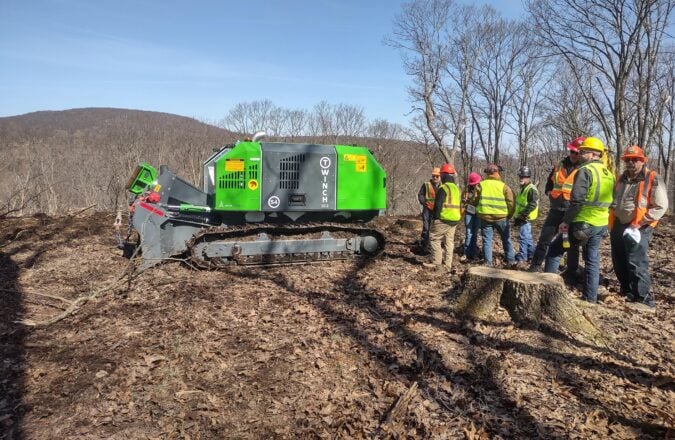Forests Are an Economic Engine

Forests are an economic engine for rural America and have the potential to do even more. Across the United States, there are opportunities to build upon the forests and supply chain to build and enhance prosperous rural communities.
Of course, we know this, but the link between the products coming from our forest and the jobs they support came into focus for me recently when looking at some data from Maine, my home state. The Maine Forest Service annually publishes information on the total volume of harvested forest products – including sawlogs (hardwood and softwood), pulpwood (hardwood and softwood), and biomass. As you’ll see in the chart below, the total timber harvest in Maine dropped from nearly 14 million green tons in 2010 to about 9.8 million green tons in 2020, the last year for which data is available. That makes sense because, during this period, several pulp mills and biomass plants closed, leading to reduced demand for wood.
Maine Timber Harvest by Product, 2008 – 2020 (green tons)
During this same period, total employment in the forest products industry fell from over 12,500 in 2008 to just under 8,000 in 2020. These figures include forestry and logging, independent loggers, and those who work in pulp and paper mills and sawmills. There’s a fair argument to be made that these figures don’t capture all forest industry jobs – obviously trucking, but also any value-added manufacturing and any services that support the industry. That noted, it’s a very good proxy for trendlines in forest industry jobs across the state. The figure below shows employment by sector, as well as the total volume of wood harvested statewide (the total from the above chart).
Maine Forest Industry Employment and Timber Harvest Levels, 2008-2020
What becomes quickly apparent is that the harvest level and jobs follow each other. For those of you who are statistics fans, the R2 between employment and harvest level is 0.81 – meaning that over 80% of the variation in employment can be predicted by the variation in harvest level.
Importantly, before I get a note from a professor, that doesn’t mean that one necessarily causes the other, but they clearly travel together.
Of course, this makes sense. As mills close, less wood is consumed. A mill closure means not only a loss of jobs in manufacturing but throughout the supply chain – foresters, loggers, truckers, and others.
These statistics – from one state – show employment and harvest levels dropping together. I would note, importantly, that the opposite is also likely to be true. In areas where forest growth exceeds harvest – which describes most places in the country – there are opportunities to create new jobs up and down the forest industry supply chain, bringing living wage jobs to rural communities. We have the forest resources in this country to support more sustainable products and can build upon the existing supply chain to get fiber from the woods to the mill. Capitalizing upon this opportunity has the potential to support rural communities across the country, and we should view forests as an economic engine that can do more.


